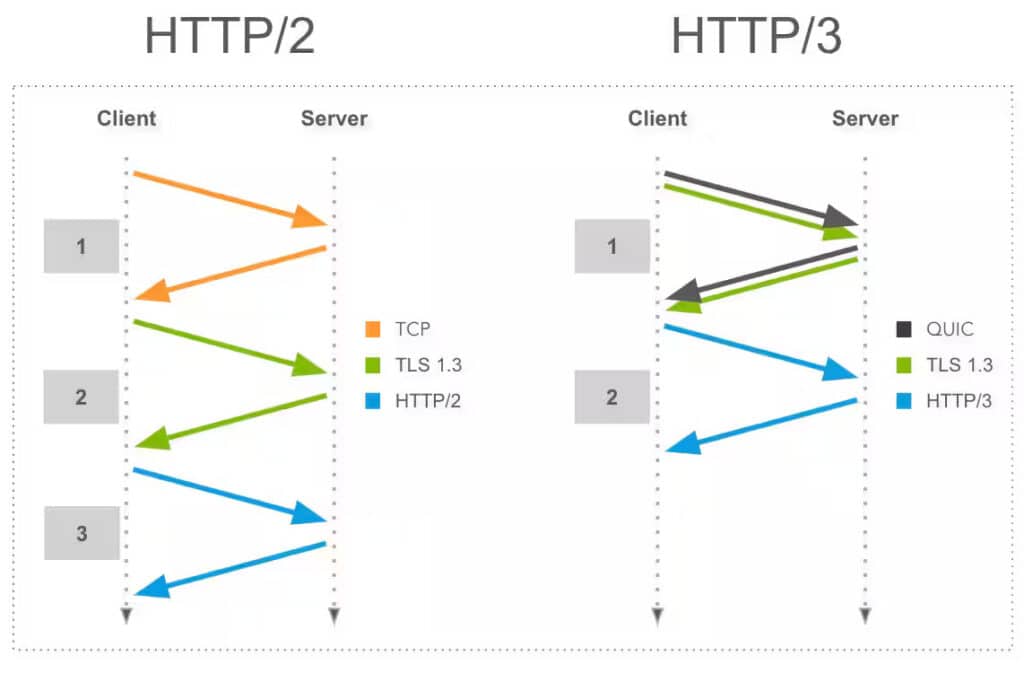HTTP/3 Explained: The Future of Web Protocols
The evolution of web protocols has been a constant journey, aimed at making the internet faster, more reliable, and secure. HTTP/3, the latest iteration in the family of Hypertext Transfer Protocols, promises a significant leap forward. Built on the foundation of the QUIC protocol, HTTP/3 brings improvements that aim to address some of the long-standing challenges faced by its predecessors. In this article, we’ll explore the key features of HTTP/3 and what it means for the future of web communications.
Join the conversation! Subscribe to OptimistDev Herald for our take. Click Here
A Brief History of HTTP Evolution
Before diving into HTTP/3, it’s important to understand the journey that led us here. The initial version, HTTP/1.1, served as the backbone of the internet for years, but it had limitations like slow connection speeds and the inability to efficiently handle multiple requests. HTTP/2, introduced in 2015, tackled some of these issues by introducing multiplexing, where multiple requests could be processed in parallel over the same connection.
However, HTTP/2 also had its flaws, such as the head-of-line blocking problem, where the delay in processing one request would block others in the pipeline. HTTP/3 builds upon HTTP/2, but instead of improving upon TCP, it completely bypasses it in favor of QUIC, a transport protocol designed to run over UDP. This decision marks a shift in how the internet will operate, making HTTP/3 a critical advancement in the future of web protocols.

Key Features of HTTP/3
1. Built on QUIC: A New Foundation
One of the most significant changes in HTTP/3 is its foundation on the QUIC (Quick UDP Internet Connections) protocol. Unlike TCP, QUIC operates over UDP, offering faster connections, improved congestion control, and enhanced security features. This transition allows HTTP/3 to eliminate many of the shortcomings in TCP, such as connection setup time and susceptibility to head-of-line blocking. QUIC’s built-in features, like multiplexing and encryption, offer a streamlined approach to modern web communication.
In short, QUIC can be thought of as TCP 2.0, but with faster, more reliable connections that are tailor-made for today’s web demands.
2. Enhanced Multiplexing
Multiplexing was one of the major advancements introduced by HTTP/2, allowing multiple data streams to be sent concurrently over a single connection. However, HTTP/2 still faced the head-of-line blocking problem, where if one stream encountered a delay, the entire connection would be held up.
HTTP/3 addresses this issue by implementing fine-grained multiplexing directly in QUIC. In HTTP/3, each stream is independent, meaning a problem with one stream doesn’t affect the others. This results in more efficient data transfers and a smoother user experience, especially for content-heavy websites and applications.
3. Built-in Encryption and Security Enhancements
Security is at the core of HTTP/3, with encryption being a fundamental feature, not an optional add-on. In previous versions of HTTP, encryption was handled by TLS (Transport Layer Security) as a separate layer. In HTTP/3, encryption is integrated into the transport layer itself, offering stronger protection by default.
This approach eliminates the use of plaintext HTTP connections entirely. By combining encryption with other security features, such as built-in DDoS (Distributed Denial-of-Service) protection and forward secrecy, HTTP/3 significantly enhances the safety and integrity of web communications. Forward secrecy ensures that even if a security key is compromised in the future, past communications remain secure.
4. Connection Resilience
Another key feature of HTTP/3 is its ability to maintain connection resilience, even when switching between networks. Traditionally, with TCP, if a user moved from one network to another (for example, from Wi-Fi to cellular data), the connection would drop, requiring a new one to be established. This leads to performance degradation and potential service interruptions.
HTTP/3 solves this with the introduction of Connection IDs (CIDs), allowing the protocol to persist even when network conditions change. This is particularly useful for mobile devices, where users frequently switch networks. The QUIC protocol negotiates these CIDs between client and server, ensuring that the connection remains stable and uninterrupted, even during transitions.
Benefits for Web Developers and Network Admins
The adoption of HTTP/3 brings several notable benefits for web developers and network administrators alike:
- Improved Page Load Speeds: Faster connection establishment and multiplexing mean that web pages and applications load quicker, improving user experience.
- Better Handling of Mobile Networks: HTTP/3’s connection resilience ensures smoother transitions between networks, particularly beneficial for mobile users.
- Enhanced Security: Built-in encryption at the transport layer reduces the risks of man-in-the-middle attacks and other security breaches.
- Simpler Network Management: QUIC’s ability to maintain connections and optimize traffic management reduces the complexity faced by network admins in monitoring and optimizing HTTP traffic.
The Adoption of HTTP/3
While HTTP/3 offers many benefits, its adoption will not happen overnight. HTTP/1.1 and HTTP/2 are still widely used, and HTTP/3 will likely coexist with them for the foreseeable future. According to recent estimates, HTTP/1.1 still accounts for nearly 30% of global web traffic.
The transition to HTTP/3 will be gradual, with major browsers and content delivery networks (CDNs) like Google Chrome, Firefox, and Cloudflare already supporting it. However, it will take time for HTTP/3 to become the default protocol across the web. For most developers, understanding how HTTP/3 works and its potential advantages is essential as its adoption increases.
Challenges and Future Outlook
Despite its numerous advantages, HTTP/3 also presents some challenges. The encrypted nature of QUIC complicates network traffic monitoring, making it harder for network operators to detect patterns and identify network abuses. Additionally, some legacy systems may not easily adapt to the new protocol.
Nonetheless, HTTP/3 represents a significant step forward in the evolution of web protocols. It addresses the limitations of both TCP and HTTP/2, offering a more secure, faster, and resilient foundation for the future of the web.
Conclusion
HTTP/3 is set to redefine how web protocols operate, offering enhanced performance, security, and reliability. With its foundation on the QUIC protocol, HTTP/3 overcomes many of the limitations inherent in previous versions of HTTP and TCP, making it a critical development for the modern internet. As adoption grows, web developers and network administrators will need to stay informed and prepared to leverage the benefits that HTTP/3 brings to the table.



